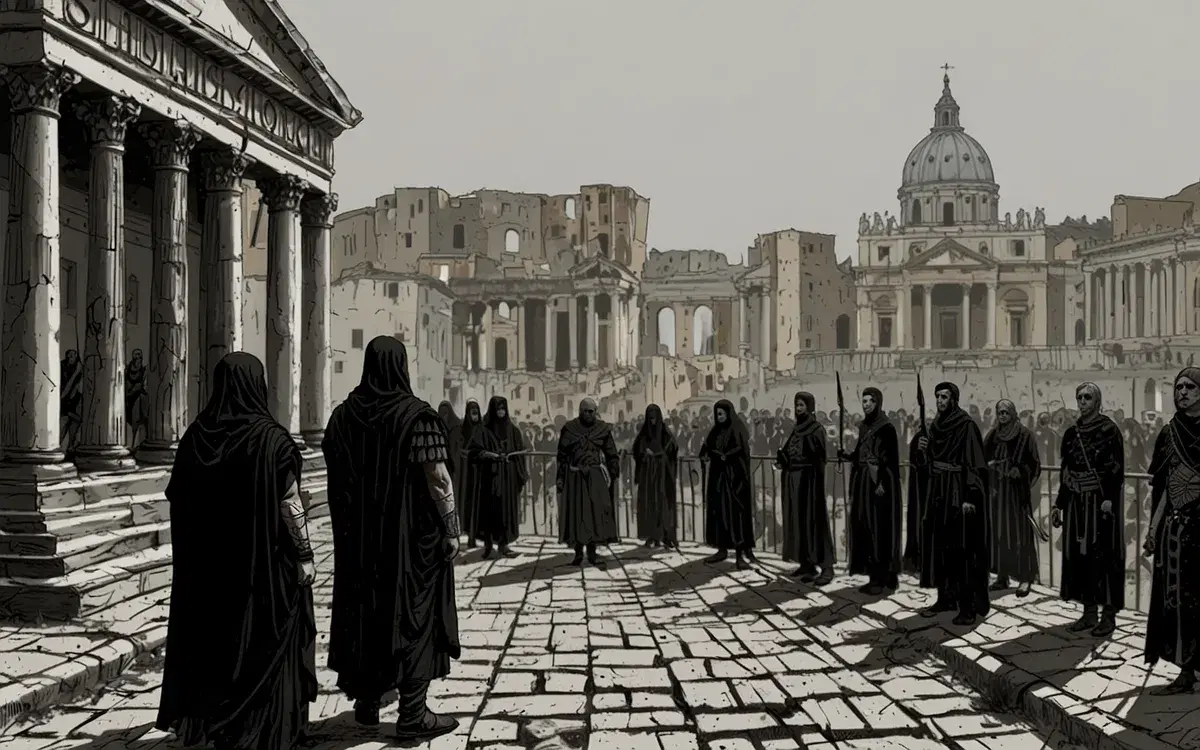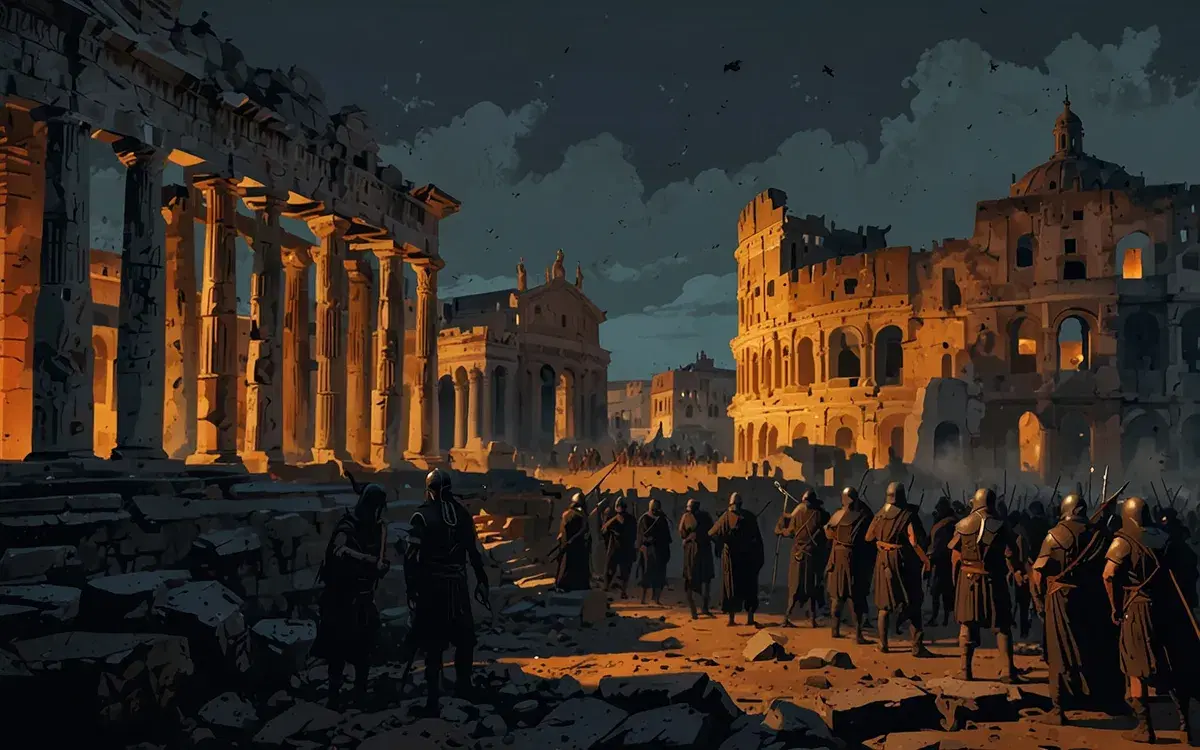Goths and the Fall of Rome
Europe’s rivers, especially the Rhine and the Danube, played a major role in shaping its history. These rivers served as natural borders for the Roman Empire, acting as barriers between Roman civilization and the untamed lands beyond. For many years, Roman soldiers stood guard along these rivers, defending the empire from the tribes that lived outside its boundaries. However, over time, these tribes grew stronger and more organized, making it increasingly difficult for the Romans to control them.
Germanic Tribes and the Romans
One group, the Goths, would play a huge role in the eventual fall of Rome. By the 4th century AD, the Goths had settled near the Danube River and the Black Sea. But their journey there was long and filled with hardships. Originally, the Goths lived near the Baltic Sea, far to the north. The reasons for their migration remain unclear. It could have been due to famine, wars with other tribes, or perhaps even a prophecy or guidance from their gods.
At first, the Goths fought fierce battles with the Romans. However, over time, they began to make peace and trade with them. They even started adopting parts of Roman culture, learning their customs, and building connections with their powerful neighbors. The Goths began to change from wild tribes into a more organized society influenced by Roman ways.

Germanic Tribes and the Romans
New Religion: Christianity
One of the most significant changes for the Goths was their adoption of Christianity. They abandoned their old gods, such as Thor and Woden, and embraced the teachings of Jesus Christ. This transformation was led by Ulfilas, a Gothic priest who had spent time in Constantinople, the Roman capital. Ulfilas not only converted the Goths but also gave them a written language.
To help his people understand Christianity, Ulfilas created an alphabet for the Gothic language and translated the Bible into it. This was an enormous task. Before he could even translate, he had to invent a system of writing that his people could use. Once the translation was complete, he then had to teach the Goths how to read it. Thanks to Ulfilas, the Goths became not only Christians but also more educated and connected to Roman culture.
Trouble from the East: The Huns
Just as the Goths were settling into their new lives, a terrifying new enemy appeared—the Huns. These warriors came from Central Asia, and they were unlike any group the Europeans had ever seen. They had strange customs, rode horses with incredible skill, and used fearsome weapons.
The Huns were so frightening that many tribes simply fled rather than face them in battle. An old Gothic writer described them as having faces scarred by fire and eyes so small that they looked more like animals than humans. The Huns’ reputation for cruelty and their ability to strike quickly made them nearly unstoppable.
The Goths tried to resist the Huns but could not hold them back. The eastern Goths, called the Ostrogoths, were defeated and ruled by the Huns for almost a hundred years. The western Goths, called the Visigoths, chose to flee rather than fight. They reached the Danube River and begged the Romans to let them cross to safety.
Refuge and Betrayal
The Romans agreed to let the Visigoths cross the Danube, but only under harsh conditions. The Goths had to give up their weapons, and many had to send their children to the Romans as hostages. The desperate Goths accepted these terms, but some secretly kept their weapons by bribing Roman officials.
Once inside the Roman Empire, the Goths hoped for safety, but they faced mistreatment instead. Roman officials stole food meant for the Goths and sold their children into slavery. Many Goths starved and grew angry at their unfair treatment.
Battle of Adrianople
In 378 AD, the Visigoths could no longer stand the abuse, and they rebelled. They faced the Romans in a massive battle near Adrianople, in what is now Turkey. The Roman army, led by Emperor Valens, was confident of victory, but their overconfidence proved to be a fatal mistake.
The Romans were unprepared for the Goths’ fierce attack. They were tired, hungry, and unable to organize themselves properly. When the battle began, the Roman cavalry fled almost immediately, leaving the infantry surrounded and vulnerable. The Goths overwhelmed them, killing thousands of soldiers, including Emperor Valens himself. It was one of the worst defeats in Roman history.

Battle of Adrianople
Peace and Trouble
After their victory, the Goths roamed freely within Roman territory. They had proven that the once-mighty Roman Empire could be defeated. Emperor Theodosius tried to restore peace by giving the Goths land and recruiting them into the Roman army. For a time, this strategy worked, and the Goths even fought alongside the Romans in some battles.
However, this fragile peace fell apart after Theodosius died in 395 AD. The empire was divided into eastern and western halves, and weak leadership led to more problems. The Goths, under their new leader Alaric, were ready to take advantage of the situation.
Alaric and the Sack of Rome
Alaric was a skilled and ambitious leader. He had served in the Roman army and learned their tactics, which made him a dangerous opponent. He saw the weakness in the divided empire and decided it was time to act.
Alaric led the Goths in several attacks, eventually marching straight to Rome. In 410 AD, his forces captured and looted the city. It was a shocking event, as Rome had stood as the center of the civilized world for centuries. The sack of Rome marked the beginning of the empire’s collapse.
End of Rome and the Legacy of the Goths
The Goths’ migration and battles changed history forever. They played a key role in the fall of the Roman Empire and the start of the Middle Ages. Over time, they settled in new lands, built their own kingdoms, and blended their culture with Roman traditions.
The story of the Goths is a reminder that history is shaped by the struggles of people seeking better lives. Their journey from wandering tribes to kingdom builders shows how ambition, conflict, and change can shape the world in unexpected ways.





